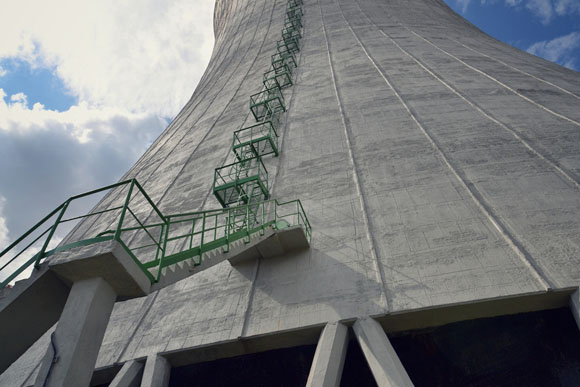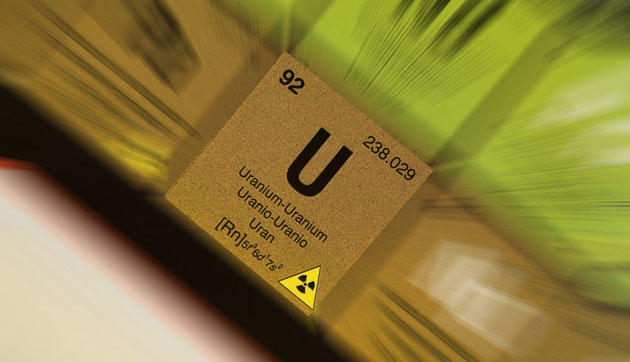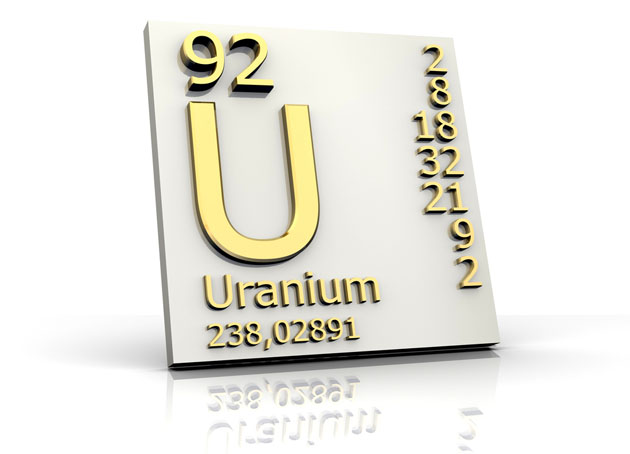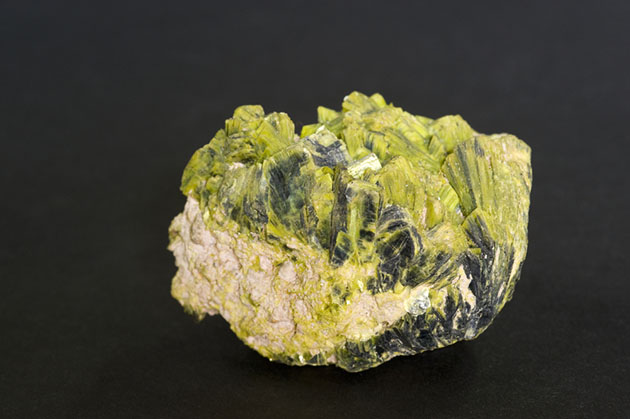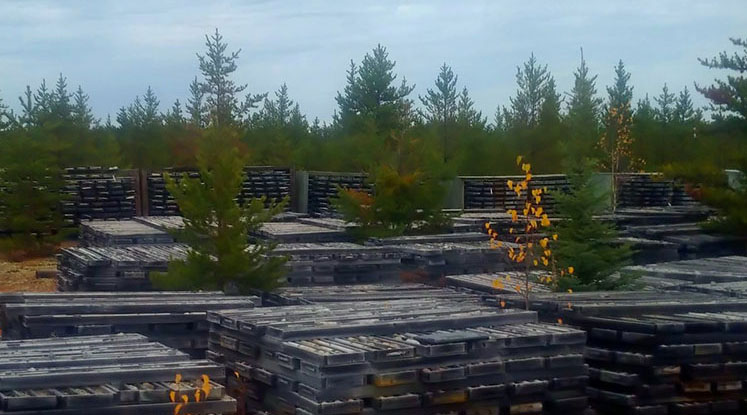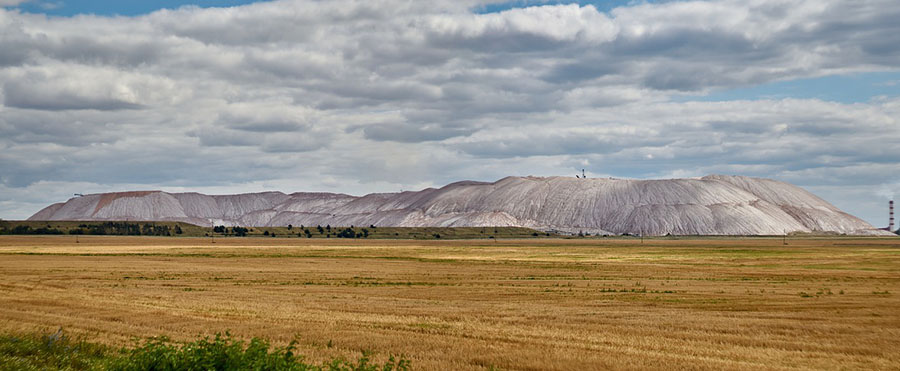TICKERS: BTE, BHP; BHPLF, FIS, , UTY, WTR
Energy Investing in Saskatchewan: Tom MacNeill
Interview
Source: Brian Sylvester of The Energy Report (2/21/12)
 Tom MacNeill doesn't have to go far to find the most unique early-stage energy companies to invest in. The President and CEO of Saskatchewan-based investment firm 49 North Resources, MacNeill is bullish on his own backyard, and says of the province's resources, "You name it, we've got it." In this exclusive interview with The Energy Report, he explains why Saskatchewan resource plays trump their Alberta or Ontario counterparts.
Tom MacNeill doesn't have to go far to find the most unique early-stage energy companies to invest in. The President and CEO of Saskatchewan-based investment firm 49 North Resources, MacNeill is bullish on his own backyard, and says of the province's resources, "You name it, we've got it." In this exclusive interview with The Energy Report, he explains why Saskatchewan resource plays trump their Alberta or Ontario counterparts.
The Energy Report: Even some of the most successful small-cap resource investors were schooled in 2011. What did you learn from last year's ups and downs?
Tom MacNeill: We were definitely reminded of the nature of resource investments. Liquidity absolutely vanished in 2008, but by the time it reappeared in 2009 and 2010, investors had decided they wanted to keep their hands on their cash. Oil entered and exited 2011 at roughly the same price, but at times it had been much higher and much lower. That spooked investors. It became evident that most of the investors who were still comfortable with equity investments preferred dividend paying structures. It's been a very edgy time.
We were reminded that investors were walking on thin ice. The companies that stepped up and started increasing distributions from their oil and gas production were well served. Those that did not, were not. There's been a bifurcation in the market. The entire capped energy index is down relative to most of the broader indexes for the simple reason that investors were withdrawing money from the sector even though one barrel (bbl) of oil was about $100 throughout the year.
TER: Will the legacy of 2011 be the split between those companies that brought in dividends and those that didn't?
TM: It's one of the legacies. A lot of companies die in the aftermath of an event like the 2008 downturn. However, not enough undeserving companies died off because they had just completed financings and had millions of dollars in their treasuries that enabled them to weather the storm. We didn't have enough of a rout.
Going into 2011, there were still a bunch of these Johnny-come-latelies and investors got wise. They started to watch the burn rate and what management was doing. It was a wakeup call. It was a really bad year in '08, it was OK in '09 and '10, and then '11 leveled as investors became objective. I believe that investors are more objective this year than they have been in five years.
TER: Your company doesn't just invest in resource companies, it also instills management teams and brings in consultants with specific expertise. It's an investor and a partner.
TM: We've had to be a little bit of everything within 49 North. We act as in-house management for developing companies. We provide seed capital and later-stage capital. We've got 25-plus of the best geoscientists in Saskatchewan on staff in one of our subsidiary companies, Northrim Exploration Ltd. That enterprise works with most of the senior players working in the province developing potash, oil and gas, and other sedimentary resources and is moving into hard rock mining consultation. We also have substantial connections within the junior resource capital market and investment banking community worldwide.
We had to develop it that way for the simple reason that we had no capital market in Saskatchewan. Where government used to hold business back, it is now very supportive. The resource business is now wide open. It's a tremendous opportunity for us, and anybody who wants to invest in the province, because it's like Alberta was in the '40s and '50s.
TER: Saskatchewan certainly shares some of the same commodities with Alberta.
TM: We view ourselves as much better off than Alberta from a geological perspective. The Western Canadian Sedimentary Basin overlays almost all of Alberta, meaning there's really no hard rock mining with the exception of some coal mining and some other assets in the Rockies. Alberta is very much an "energy only" resource province.
Saskatchewan is the opposite. The sedimentary basin covers the southern half, but the northern half is exposed Precambrian shield. We've got all of the mining prospectivity and assets that you would find in Ontario and other hard rock jurisdictions, plus all of the oil and gas that you find in Alberta, and a sea of potash and other natural resources. You name it, we've got it. The neatest part is that it's mostly still in the ground. There are 27 active mines in the province, but we should have a multiple of that given our resource base.
TER: How long do you think it will take you to get to that point?
TM: We have just begun, but it is moving fast. There is $15 billion (B) worth of capital committed already to expansion in the potash industry, not including capital commitments from BHP Billiton Ltd. (BHP:NYSE; BHPLF:OTCPK), which is moving into the final feasibility stage of its 8 million tons (Mt) per annum potash mine at Jansen Lake. When mining is combined with our exponential growth in energy development I expect that $15B will double or triple in the next 5-10 years.
One new gold mine just came on-stream this past year. There are three others that are prospective in the Greenstone Belt in northern Saskatchewan. There's a potential rare earth elements deposit that's near development. In the next 10 years, at least 10–20 mining operations should reach feasibility in the province.
TER: One commodity that Saskatchewan is well known for is uranium. The Athabasca Basin is one of the richest areas for uranium in the world. In a 2010 interview with The Gold Report, you told us that you had mostly purged uranium from 49 North Resources' portfolio and wouldn't get back in until it was "time." Is it time yet?
TM: The comments I made were based on a couple of observations. There was a physical price spike in 2006 due to uranium speculators. It created a parabolic price chart, so we knew that the price of uranium was going to come off. When that happens, all of the junior explorers get crucified. We took that time to exit our positions.
We've been diligently watching the uranium price chart and energy complex in general and view this year as the time to be taking positions. Uranium stocks have been beaten up. That's the time when we get involved in projects and we're actively pursuing more than what we have on the books right now.
We've got a significant investment in Unity Energy Corp. (UTY:CVE), which is an early-stage explorer in the same area as Hathor Exploration Ltd.'s (HAT:TSX.V) RoughRider deposit and the area were Fission Energy Corp. (FIS:TSX.V; FSSIF:OTCQX) is exploring. Also we have been accumulating a large position in Eagle Plains Resources. They have substantial landholdings in the Athabasca basin in Saskatchewan and recently announced a high-grade uranium discovery on their property near the Rabbit and Cigar lake mines.
TER: Tell us about Unity.
TM: It's in the early stages of a promising exploration program having done the geophysical work necessary to advance their package of properties. We hold approximately 12% of Unity. Given that initial results have been very encouraging, we will likely be expanding our exposure shortly.
TER: What's the earliest that Unity would have a resource estimate?
TM: They are at a very early stage in the exploration cycle so the earliest would likely be at least 2-3 years. Investors need to realize uranium exploration takes time, is expensive and if you want good science you can't rush the process. This is a long-term investment, as all uranium exploration plays are.
TER: What macroeconomic trends are going to continue to drive energy commodities?
TM: Oil acts a lot like gold in that it's a good parking lot for rampant money printing in the U.S. One thing that can quell inflation in the short term is a high oil price since it slops up many of the newly printed dollar bills in an asset that is used almost immediatly. This seems counter-intuitive, but it takes time for the inflationary effect of high oil prices to bleed into higher asset prices. So in the short term, it actually helps the money printers because all over the world, oil is traded in U.S. currency, thus distributing the new liquidity worldwide. The U.S. is the only country with this advantage, which creates some ironic economic activity that investors should pay attention to. As long as the U.S. keeps printing money, there's going to be a high oil price. If the liquidity being added actually creates economic development, there will be rampant inflation. Usually that's a tap that can't be turned off, which could lead to much higher oil and gold prices. We view the coming five-year period as very interesting and probably very lucrative for resource investors, especially in gold and energy.
TER: What energy commodities are you most bullish on this year?
TM: We're focusing on heavy oil and coal (for conversion to crude oil), but our backyard is unique. There are 20–40 billion barrels (Bbbl) of heavy oil in place in west central Saskatchewan. There are also staggering quantities of light oil as well in Saskatchewan, but I'm not as interested in that. Everyone knows about the Bakken shale and other tight light oil plays now being developed using modern multi-staged fracturing but very few follow heavy oil development.
My interest is tied to the recycle ratio, which is the net profit/bbl divided by acquisition and development costs/bbl. The ratio for light oil in Saskatchewan averages somewhere around two, meaning if a company puts $1 million (M) into acquiring and developing an average well, it will get $2M out of it. But heavy oil in Saskatchewan can have a recycle ratio as high as five.
That's not true of everywhere in the world. We have two heavy oil upgraders in Saskatchewan that have been consistently adding capacity so we've got a real blessing here in that we can develop our heavy oil fields and achieve higher netbacks than elsewhere because of that very unique refining capacity in our backyard.
TER: What are some of the companies benefiting from that?
TM: Most of the companies that are developing these heavy oil assets that are in production are very large already and beyond our scope, such as Canadian Natural Resources LTD. (CNQ;TSX) and Baytex Energy Corp. (BTE.UN:TSX). We're sponsoring private companies in this space. However, Baytex is coming up with ingeneous ways to drill multiple lateral wells from one drill pad and get enormous production out of thin-formation, heavy oil projects. They also pay a pretty decent dividend yield as well. That's the kind of story we're looking for, but we're looking for it at a very early stage when a company has a prospective heavy oil development field and is investing its first $1–5M in the project.
TER: Are any of your private oil plays expected to go public?
TM: Probably. Allstar Energy Ltd., in west central Saskatchewan, is a light oil producer that is converting into a heavy oil producer as well. We've actually taken that one in-house and made it a subsidiary company. Had the capital markets been a little bit more buoyant over the last nine months, we might have entertained taking that company public sometime last year. At some point, given it's growth potential, its capital needs will outstrip our ability to supply it and we'll have to take the training wheels off and take it public. That could be in 2012 or 2013 depending on how development goes.
We also sponsor Admiralty Oil Ltd., a very early-stage light oil development in southeastern Saskatchewan. It will probably go public if it has some success this year.
TER: You said you are bullish on coal. What are some of your holdings in that space?
TM: There are two that we really like, which are both developing coal-to-liquid technology. We view coal as just another long carbon chain that can be converted into a shorter carbon chain to make heavy crude. These two enterprises are going about it in different ways.
NuCoal, a private company in southern Saskatchewan, will use full gasification to convert coal into transportation fuels at the mine site. It's a multibillion-dollar project. The company has control of one of the largest coal resources in the world and it could possibly go public sometime in the next 12–18 months.
Westcore Energy Ltd. (WTR:TSX.V), which we have an approximate 25% stake in, has a significant thermal coal resource that it's developing on the Saskatchewan-Manitoba border. It is working with Quantex Energy in Calgary, which has a proprietary technology developed at the University of West Virginia. Quantex tested some of Westcore's coal and determined that it's perfectly adequate for converting into heavy or light crude depending on the extent of processing.
Westcore is currently starting its winter drilling exploration program. It already has at least seven defined targets that have hit intersections as thick as 100 meters (m) of coal, which is absolutely enormous. It's conservative to estimate that those intersections average 50Mt/coal, which could mean that the company has at least 300Mt/coal in one small area. That's world class. It appears it will cost about $40-50/bbl of oil for the conversion technology. It will probably cost approximately $200M to build an initial 10,000 bbl/day conversion facility. Given that the process appears to convert coal to heavy crude at a ratio of 3-4 bbl crude from each ton of coal, there's an almost endless potential supply of heavy crude oil for the refiners in Saskatchewan. Now that is an exciting energy story.
TER: It does sound exciting. Is the process by which they turn coal into heavy oil similar to what's happening in the oil sands where they steam the bitumen to separate the oil from the sand and gravel?
TM: That's a liberating technique using steam to get the bitumen. Then the bitumen is processed through hydrocracking, which involves heating up the bitumen under pressure with catalysts to separate it by strata into various elements. The lights float to the top of the column and the heavy stuff stays at the bottom, leaving five or six different strata. These synthetic crude products are then piped to refineries for further processing. The NuCoal project is similar to that in that it uses similar full-scale gasification technology but with the intention of the plant refining all the way to the transportation fuel level right on site.
The Westcore/Quantex route involves using a low-temperature direct liquefaction process. It adds some proprietary chemicals to the coal once it's emulsified and converts it into heavy crude. The beauty is that the process does not leave much of a greenhouse gas footprint at the mine/processing site because most of the carbon dioxide and other problematic gases that would be emitted stay in the heavy crude and go to the refinery. The exciting part about low temperature conversion is its scale-ability with initial capital cost of probably one tenth that of full-scale gasification.
Both companies have viable approaches; they are simply on opposite ends of the development spectrum. One has low capital cost with smaller initial production while the other has large capital requirements at startup and therefore large initial output. At these energy prices we believe both approaches will be robustly economic.
TER: Once it's converted it goes to the refineries. Where does the oil go from there?
TM: It is channeled into the North American distribution system running from northern Alberta into a hub center near Chicago. It goes directly into the pipeline system that bisects Saskatchewan diagonally. That's the beauty. We're infrastructure laden because we're in between the consumptive market in the eastern U.S. and the production of western Canadian oil sands and conventional producers in the Western Canadian Sedimentary Basin.
TER: Do you have some parting thoughts on the energy space?
TM: I'm curious to see what prices are going to do. We're comfortable that the price of uranium has bottomed and that it's likely a very long-term bottom. We got our feet wet last year in some of the early-stage investments we've made. We're going a lot harder this year and repatriating capital back into projects that we like. There are lots of good opportunities out there within companies that have done poorly in this twitchy market but have good projects.
The energy space should be an exciting one. If the governments keep adding liquidity, the resulting competitive devaluation of currencies will be inflationary and good for commodity prices. Or perhaps the world is going to get a little bit better—also good for commodity prices. It's a bit of a win-win situation over the next five years if investors are patient.
Investors have to make sure that they stick to certain criteria. Look at management first, not the project, because the best project in the world can be screwed up by bad management. A marginal project can be made wonderful by good management.
TER: Thanks, Tom.
Read more of Tom MacNeill's gold investing ideas.
Tom MacNeill is the founder, president and chief executive officer of 49 North Resources Inc., a Canadian resource investment company headquartered in Saskatchewan. As the first entity of its kind in the province's history, 49 North is a pioneer in what is rapidly becoming one of the world's most renowned resource jurisdictions. A graduate of the University of Saskatchewan (economics/geology), MacNeill is also a certified general accountant and holds a chartered financial analyst designation. MacNeill's extensive knowledge of Canadian capital markets has been gained through experience as a management accountant within the mining industry, investment advisor with a major Canadian brokerage firm and chief financial officer of a Canadian trust corporation. He is a well-respected member of the resource industry and part of a worldwide network of exploration professionals and resource developers which enables him to source and structure projects.
Want to read more exclusive Energy Report interviews like this? Sign up for our free e-newsletter, and you'll learn when new articles have been published. To see a list of recent interviews with industry analysts and commentators, visit our Exclusive Interviews page.
DISCLOSURE:
1) Brian Sylvester of The Energy Report conducted this interview. He personally and/or his family own shares of the following companies mentioned in this interview: None.
2) The following companies mentioned in the interview are sponsors of The Energy Report: Fission Energy Corp. Streetwise Reports does not accept stock in exchange for services.
3) Tom MacNeill: I personally and/or my family own shares of the following companies mentioned in this interview: Westcore, 49 North Resources, NuCoal Energy, Allstar Energy, Admiralty Oils, Unity Energy. I personally and/or my family am paid by the following companies mentioned in this interview: 49 North Resources. I was not paid by Streetwise for participating in this story.
Tom MacNeill: We were definitely reminded of the nature of resource investments. Liquidity absolutely vanished in 2008, but by the time it reappeared in 2009 and 2010, investors had decided they wanted to keep their hands on their cash. Oil entered and exited 2011 at roughly the same price, but at times it had been much higher and much lower. That spooked investors. It became evident that most of the investors who were still comfortable with equity investments preferred dividend paying structures. It's been a very edgy time.
We were reminded that investors were walking on thin ice. The companies that stepped up and started increasing distributions from their oil and gas production were well served. Those that did not, were not. There's been a bifurcation in the market. The entire capped energy index is down relative to most of the broader indexes for the simple reason that investors were withdrawing money from the sector even though one barrel (bbl) of oil was about $100 throughout the year.
TER: Will the legacy of 2011 be the split between those companies that brought in dividends and those that didn't?
TM: It's one of the legacies. A lot of companies die in the aftermath of an event like the 2008 downturn. However, not enough undeserving companies died off because they had just completed financings and had millions of dollars in their treasuries that enabled them to weather the storm. We didn't have enough of a rout.
Going into 2011, there were still a bunch of these Johnny-come-latelies and investors got wise. They started to watch the burn rate and what management was doing. It was a wakeup call. It was a really bad year in '08, it was OK in '09 and '10, and then '11 leveled as investors became objective. I believe that investors are more objective this year than they have been in five years.
TER: Your company doesn't just invest in resource companies, it also instills management teams and brings in consultants with specific expertise. It's an investor and a partner.
TM: We've had to be a little bit of everything within 49 North. We act as in-house management for developing companies. We provide seed capital and later-stage capital. We've got 25-plus of the best geoscientists in Saskatchewan on staff in one of our subsidiary companies, Northrim Exploration Ltd. That enterprise works with most of the senior players working in the province developing potash, oil and gas, and other sedimentary resources and is moving into hard rock mining consultation. We also have substantial connections within the junior resource capital market and investment banking community worldwide.
We had to develop it that way for the simple reason that we had no capital market in Saskatchewan. Where government used to hold business back, it is now very supportive. The resource business is now wide open. It's a tremendous opportunity for us, and anybody who wants to invest in the province, because it's like Alberta was in the '40s and '50s.
TER: Saskatchewan certainly shares some of the same commodities with Alberta.
TM: We view ourselves as much better off than Alberta from a geological perspective. The Western Canadian Sedimentary Basin overlays almost all of Alberta, meaning there's really no hard rock mining with the exception of some coal mining and some other assets in the Rockies. Alberta is very much an "energy only" resource province.
Saskatchewan is the opposite. The sedimentary basin covers the southern half, but the northern half is exposed Precambrian shield. We've got all of the mining prospectivity and assets that you would find in Ontario and other hard rock jurisdictions, plus all of the oil and gas that you find in Alberta, and a sea of potash and other natural resources. You name it, we've got it. The neatest part is that it's mostly still in the ground. There are 27 active mines in the province, but we should have a multiple of that given our resource base.
TER: How long do you think it will take you to get to that point?
TM: We have just begun, but it is moving fast. There is $15 billion (B) worth of capital committed already to expansion in the potash industry, not including capital commitments from BHP Billiton Ltd. (BHP:NYSE; BHPLF:OTCPK), which is moving into the final feasibility stage of its 8 million tons (Mt) per annum potash mine at Jansen Lake. When mining is combined with our exponential growth in energy development I expect that $15B will double or triple in the next 5-10 years.
One new gold mine just came on-stream this past year. There are three others that are prospective in the Greenstone Belt in northern Saskatchewan. There's a potential rare earth elements deposit that's near development. In the next 10 years, at least 10–20 mining operations should reach feasibility in the province.
TER: One commodity that Saskatchewan is well known for is uranium. The Athabasca Basin is one of the richest areas for uranium in the world. In a 2010 interview with The Gold Report, you told us that you had mostly purged uranium from 49 North Resources' portfolio and wouldn't get back in until it was "time." Is it time yet?
TM: The comments I made were based on a couple of observations. There was a physical price spike in 2006 due to uranium speculators. It created a parabolic price chart, so we knew that the price of uranium was going to come off. When that happens, all of the junior explorers get crucified. We took that time to exit our positions.
We've been diligently watching the uranium price chart and energy complex in general and view this year as the time to be taking positions. Uranium stocks have been beaten up. That's the time when we get involved in projects and we're actively pursuing more than what we have on the books right now.
We've got a significant investment in Unity Energy Corp. (UTY:CVE), which is an early-stage explorer in the same area as Hathor Exploration Ltd.'s (HAT:TSX.V) RoughRider deposit and the area were Fission Energy Corp. (FIS:TSX.V; FSSIF:OTCQX) is exploring. Also we have been accumulating a large position in Eagle Plains Resources. They have substantial landholdings in the Athabasca basin in Saskatchewan and recently announced a high-grade uranium discovery on their property near the Rabbit and Cigar lake mines.
TER: Tell us about Unity.
TM: It's in the early stages of a promising exploration program having done the geophysical work necessary to advance their package of properties. We hold approximately 12% of Unity. Given that initial results have been very encouraging, we will likely be expanding our exposure shortly.
TER: What's the earliest that Unity would have a resource estimate?
TM: They are at a very early stage in the exploration cycle so the earliest would likely be at least 2-3 years. Investors need to realize uranium exploration takes time, is expensive and if you want good science you can't rush the process. This is a long-term investment, as all uranium exploration plays are.
TER: What macroeconomic trends are going to continue to drive energy commodities?
TM: Oil acts a lot like gold in that it's a good parking lot for rampant money printing in the U.S. One thing that can quell inflation in the short term is a high oil price since it slops up many of the newly printed dollar bills in an asset that is used almost immediatly. This seems counter-intuitive, but it takes time for the inflationary effect of high oil prices to bleed into higher asset prices. So in the short term, it actually helps the money printers because all over the world, oil is traded in U.S. currency, thus distributing the new liquidity worldwide. The U.S. is the only country with this advantage, which creates some ironic economic activity that investors should pay attention to. As long as the U.S. keeps printing money, there's going to be a high oil price. If the liquidity being added actually creates economic development, there will be rampant inflation. Usually that's a tap that can't be turned off, which could lead to much higher oil and gold prices. We view the coming five-year period as very interesting and probably very lucrative for resource investors, especially in gold and energy.
TER: What energy commodities are you most bullish on this year?
TM: We're focusing on heavy oil and coal (for conversion to crude oil), but our backyard is unique. There are 20–40 billion barrels (Bbbl) of heavy oil in place in west central Saskatchewan. There are also staggering quantities of light oil as well in Saskatchewan, but I'm not as interested in that. Everyone knows about the Bakken shale and other tight light oil plays now being developed using modern multi-staged fracturing but very few follow heavy oil development.
My interest is tied to the recycle ratio, which is the net profit/bbl divided by acquisition and development costs/bbl. The ratio for light oil in Saskatchewan averages somewhere around two, meaning if a company puts $1 million (M) into acquiring and developing an average well, it will get $2M out of it. But heavy oil in Saskatchewan can have a recycle ratio as high as five.
That's not true of everywhere in the world. We have two heavy oil upgraders in Saskatchewan that have been consistently adding capacity so we've got a real blessing here in that we can develop our heavy oil fields and achieve higher netbacks than elsewhere because of that very unique refining capacity in our backyard.
TER: What are some of the companies benefiting from that?
TM: Most of the companies that are developing these heavy oil assets that are in production are very large already and beyond our scope, such as Canadian Natural Resources LTD. (CNQ;TSX) and Baytex Energy Corp. (BTE.UN:TSX). We're sponsoring private companies in this space. However, Baytex is coming up with ingeneous ways to drill multiple lateral wells from one drill pad and get enormous production out of thin-formation, heavy oil projects. They also pay a pretty decent dividend yield as well. That's the kind of story we're looking for, but we're looking for it at a very early stage when a company has a prospective heavy oil development field and is investing its first $1–5M in the project.
TER: Are any of your private oil plays expected to go public?
TM: Probably. Allstar Energy Ltd., in west central Saskatchewan, is a light oil producer that is converting into a heavy oil producer as well. We've actually taken that one in-house and made it a subsidiary company. Had the capital markets been a little bit more buoyant over the last nine months, we might have entertained taking that company public sometime last year. At some point, given it's growth potential, its capital needs will outstrip our ability to supply it and we'll have to take the training wheels off and take it public. That could be in 2012 or 2013 depending on how development goes.
We also sponsor Admiralty Oil Ltd., a very early-stage light oil development in southeastern Saskatchewan. It will probably go public if it has some success this year.
TER: You said you are bullish on coal. What are some of your holdings in that space?
TM: There are two that we really like, which are both developing coal-to-liquid technology. We view coal as just another long carbon chain that can be converted into a shorter carbon chain to make heavy crude. These two enterprises are going about it in different ways.
NuCoal, a private company in southern Saskatchewan, will use full gasification to convert coal into transportation fuels at the mine site. It's a multibillion-dollar project. The company has control of one of the largest coal resources in the world and it could possibly go public sometime in the next 12–18 months.
Westcore Energy Ltd. (WTR:TSX.V), which we have an approximate 25% stake in, has a significant thermal coal resource that it's developing on the Saskatchewan-Manitoba border. It is working with Quantex Energy in Calgary, which has a proprietary technology developed at the University of West Virginia. Quantex tested some of Westcore's coal and determined that it's perfectly adequate for converting into heavy or light crude depending on the extent of processing.
Westcore is currently starting its winter drilling exploration program. It already has at least seven defined targets that have hit intersections as thick as 100 meters (m) of coal, which is absolutely enormous. It's conservative to estimate that those intersections average 50Mt/coal, which could mean that the company has at least 300Mt/coal in one small area. That's world class. It appears it will cost about $40-50/bbl of oil for the conversion technology. It will probably cost approximately $200M to build an initial 10,000 bbl/day conversion facility. Given that the process appears to convert coal to heavy crude at a ratio of 3-4 bbl crude from each ton of coal, there's an almost endless potential supply of heavy crude oil for the refiners in Saskatchewan. Now that is an exciting energy story.
TER: It does sound exciting. Is the process by which they turn coal into heavy oil similar to what's happening in the oil sands where they steam the bitumen to separate the oil from the sand and gravel?
TM: That's a liberating technique using steam to get the bitumen. Then the bitumen is processed through hydrocracking, which involves heating up the bitumen under pressure with catalysts to separate it by strata into various elements. The lights float to the top of the column and the heavy stuff stays at the bottom, leaving five or six different strata. These synthetic crude products are then piped to refineries for further processing. The NuCoal project is similar to that in that it uses similar full-scale gasification technology but with the intention of the plant refining all the way to the transportation fuel level right on site.
The Westcore/Quantex route involves using a low-temperature direct liquefaction process. It adds some proprietary chemicals to the coal once it's emulsified and converts it into heavy crude. The beauty is that the process does not leave much of a greenhouse gas footprint at the mine/processing site because most of the carbon dioxide and other problematic gases that would be emitted stay in the heavy crude and go to the refinery. The exciting part about low temperature conversion is its scale-ability with initial capital cost of probably one tenth that of full-scale gasification.
Both companies have viable approaches; they are simply on opposite ends of the development spectrum. One has low capital cost with smaller initial production while the other has large capital requirements at startup and therefore large initial output. At these energy prices we believe both approaches will be robustly economic.
TER: Once it's converted it goes to the refineries. Where does the oil go from there?
TM: It is channeled into the North American distribution system running from northern Alberta into a hub center near Chicago. It goes directly into the pipeline system that bisects Saskatchewan diagonally. That's the beauty. We're infrastructure laden because we're in between the consumptive market in the eastern U.S. and the production of western Canadian oil sands and conventional producers in the Western Canadian Sedimentary Basin.
TER: Do you have some parting thoughts on the energy space?
TM: I'm curious to see what prices are going to do. We're comfortable that the price of uranium has bottomed and that it's likely a very long-term bottom. We got our feet wet last year in some of the early-stage investments we've made. We're going a lot harder this year and repatriating capital back into projects that we like. There are lots of good opportunities out there within companies that have done poorly in this twitchy market but have good projects.
The energy space should be an exciting one. If the governments keep adding liquidity, the resulting competitive devaluation of currencies will be inflationary and good for commodity prices. Or perhaps the world is going to get a little bit better—also good for commodity prices. It's a bit of a win-win situation over the next five years if investors are patient.
Investors have to make sure that they stick to certain criteria. Look at management first, not the project, because the best project in the world can be screwed up by bad management. A marginal project can be made wonderful by good management.
TER: Thanks, Tom.
Read more of Tom MacNeill's gold investing ideas.
Tom MacNeill is the founder, president and chief executive officer of 49 North Resources Inc., a Canadian resource investment company headquartered in Saskatchewan. As the first entity of its kind in the province's history, 49 North is a pioneer in what is rapidly becoming one of the world's most renowned resource jurisdictions. A graduate of the University of Saskatchewan (economics/geology), MacNeill is also a certified general accountant and holds a chartered financial analyst designation. MacNeill's extensive knowledge of Canadian capital markets has been gained through experience as a management accountant within the mining industry, investment advisor with a major Canadian brokerage firm and chief financial officer of a Canadian trust corporation. He is a well-respected member of the resource industry and part of a worldwide network of exploration professionals and resource developers which enables him to source and structure projects.
Want to read more exclusive Energy Report interviews like this? Sign up for our free e-newsletter, and you'll learn when new articles have been published. To see a list of recent interviews with industry analysts and commentators, visit our Exclusive Interviews page.
DISCLOSURE:
1) Brian Sylvester of The Energy Report conducted this interview. He personally and/or his family own shares of the following companies mentioned in this interview: None.
2) The following companies mentioned in the interview are sponsors of The Energy Report: Fission Energy Corp. Streetwise Reports does not accept stock in exchange for services.
3) Tom MacNeill: I personally and/or my family own shares of the following companies mentioned in this interview: Westcore, 49 North Resources, NuCoal Energy, Allstar Energy, Admiralty Oils, Unity Energy. I personally and/or my family am paid by the following companies mentioned in this interview: 49 North Resources. I was not paid by Streetwise for participating in this story.


